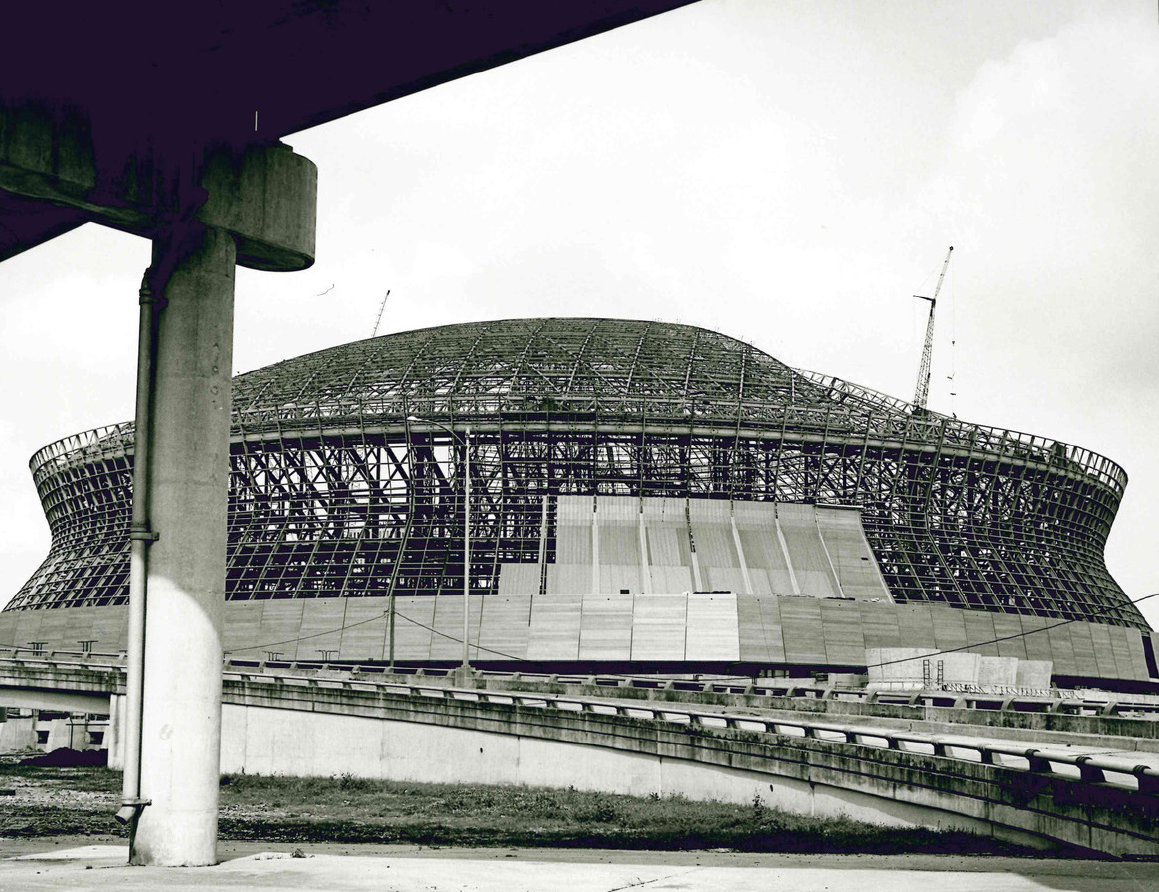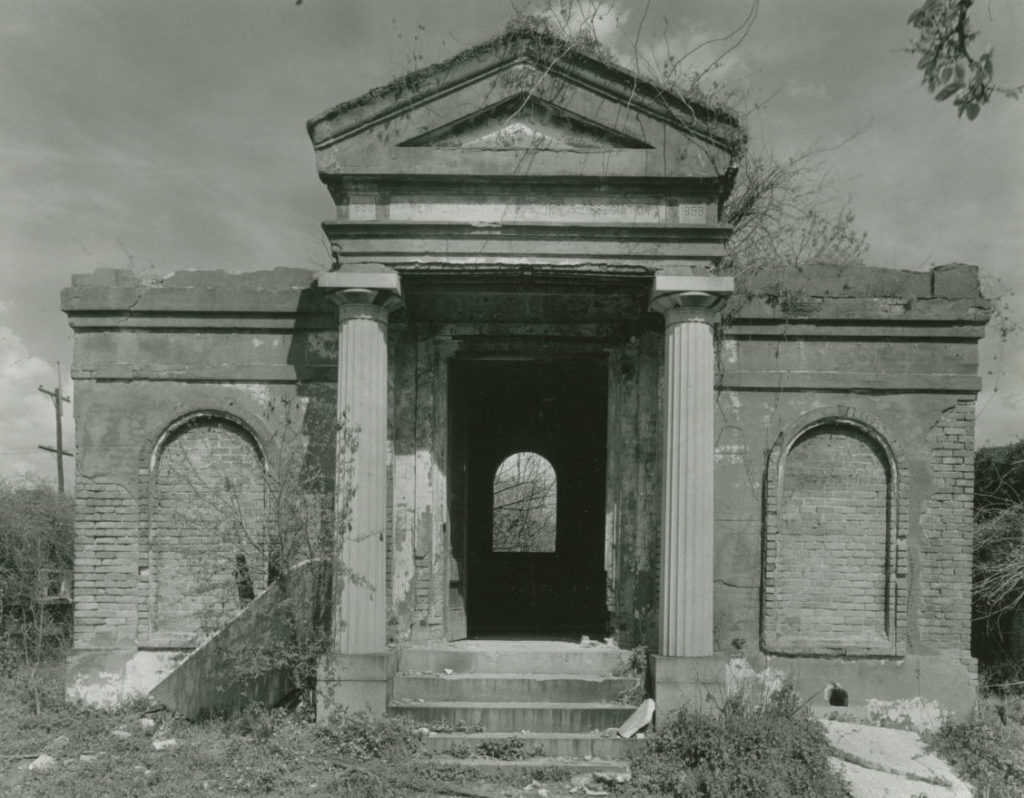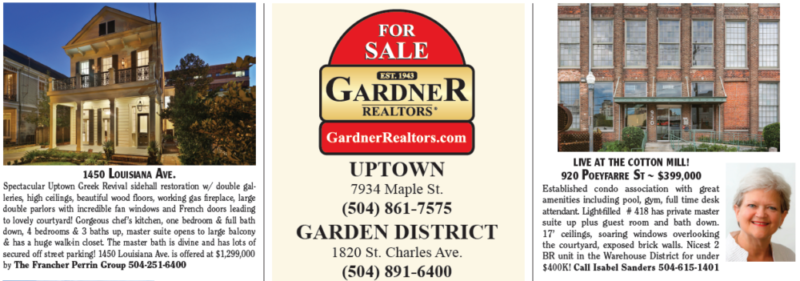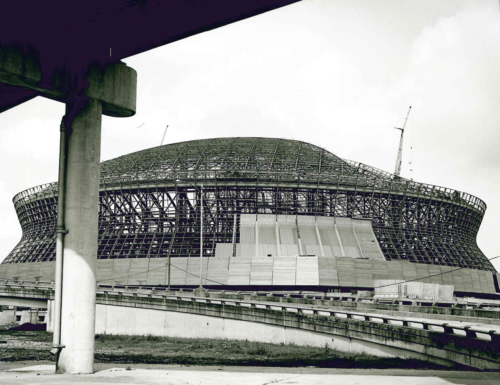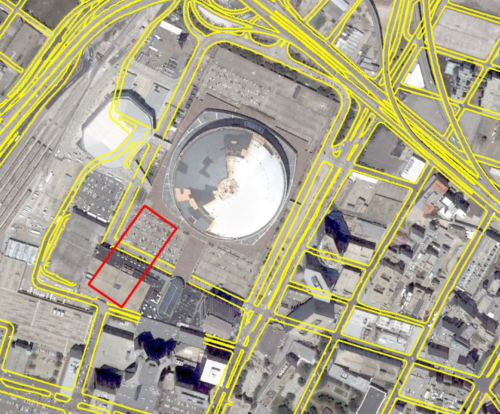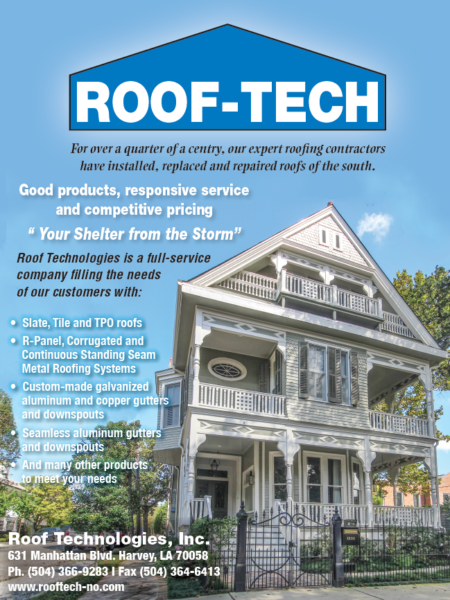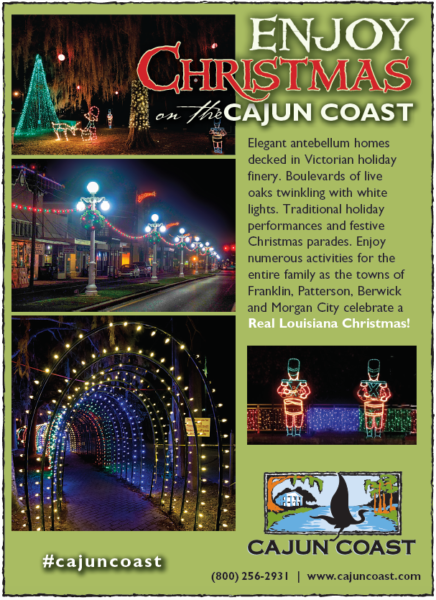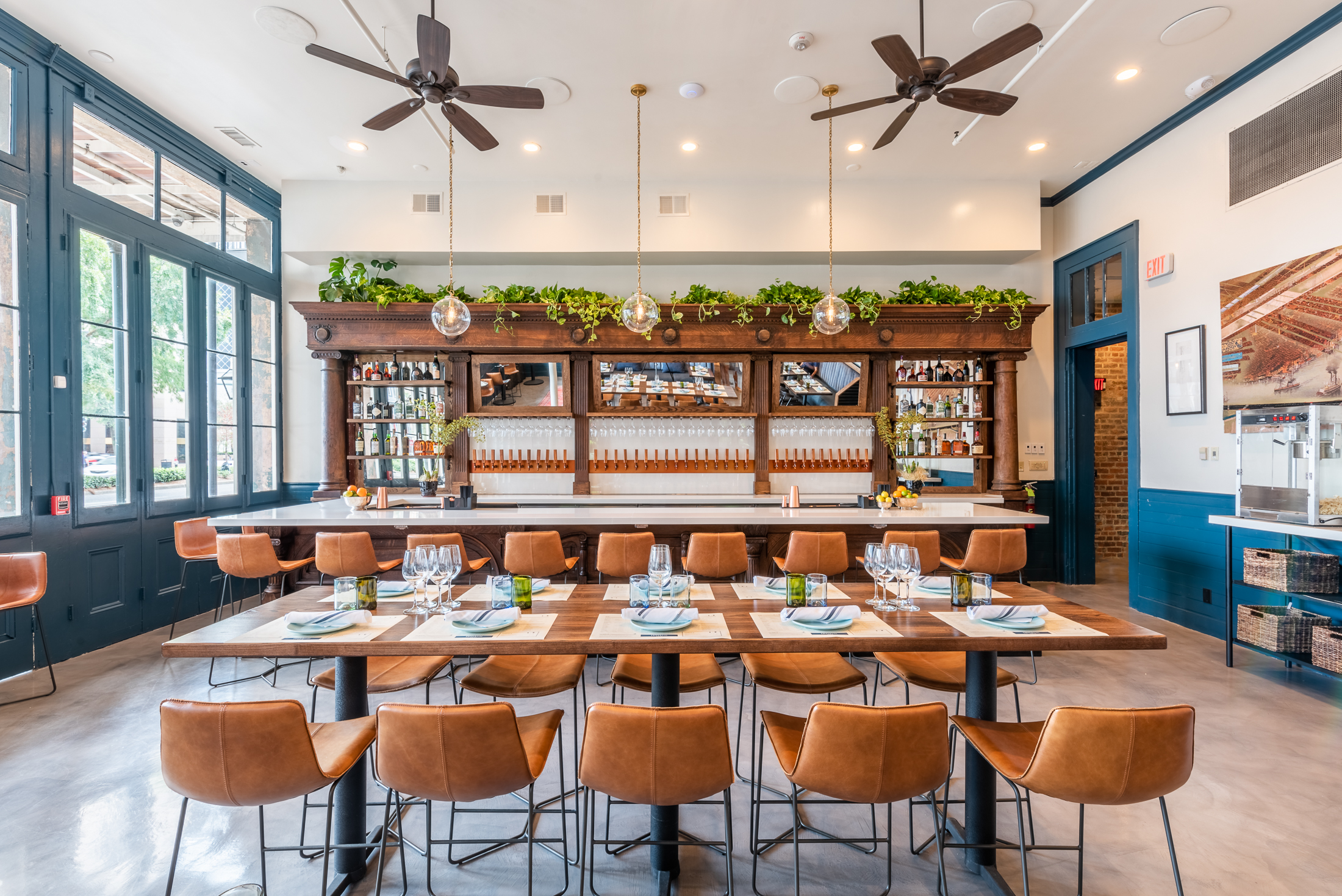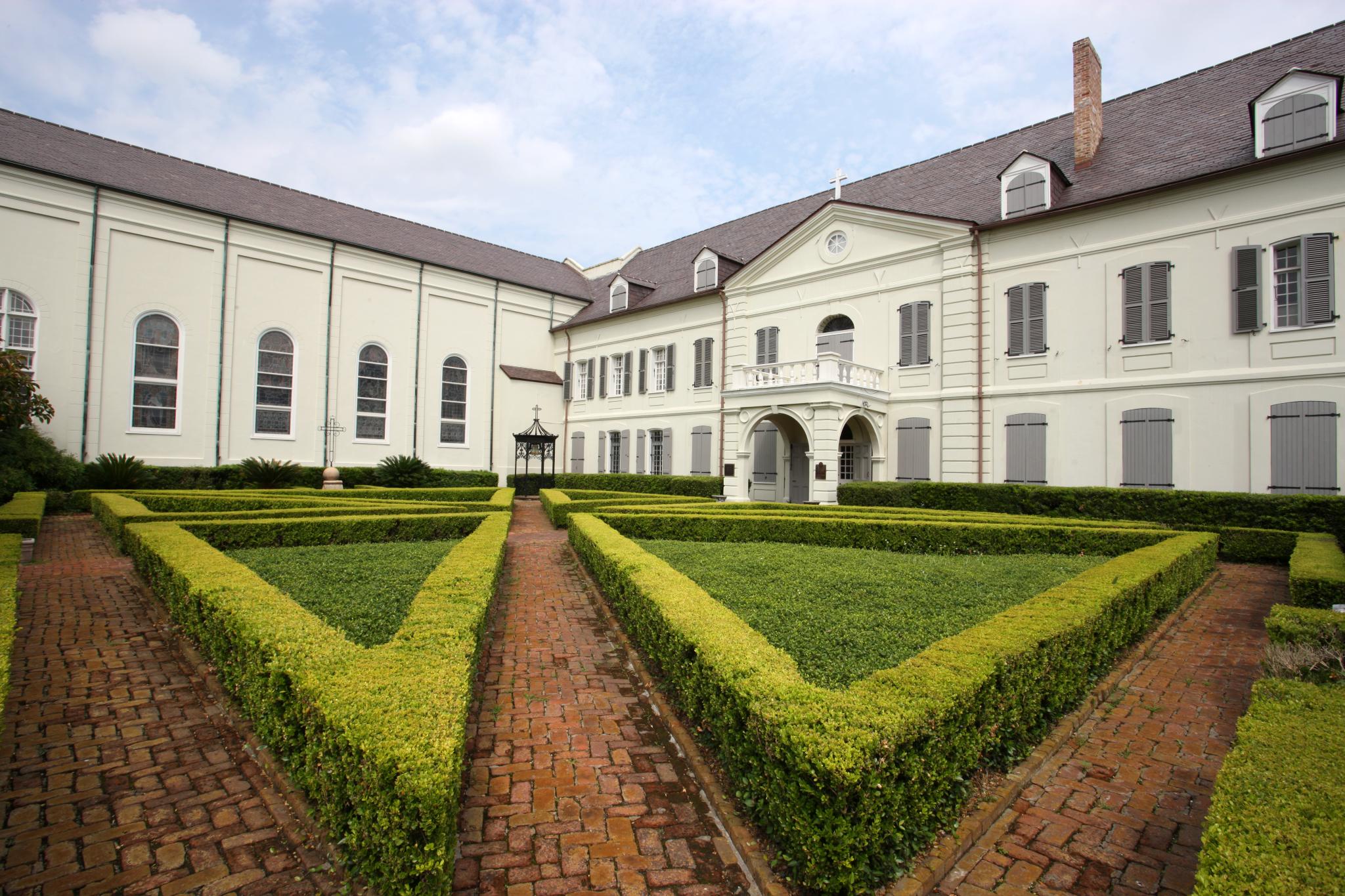This story appeared in the November issue of the PRC’s Preservation in Print magazine. Interested in getting more preservation stories like this delivered to your door each month? Become a member of the PRC for a subscription!
Every Who Dat has heard the folklore: that the travails of the New Orleans Saints can be traced to the Superdome having been built over a cemetery. In fact, the story of that not-so-final resting place, the Girod Street Cemetery, suggests that street improvements pose more risks to cemeteries than cemeteries do to football teams.
Origins of that now-gone graveyard date to 200 years ago, when Anglo-Americans began to migrate into what had previously been an overwhelmingly Catholic city with a Francophone Creole population. The newcomers, like all migrants, brought with them all their cultural traits, chief among them religion. Within two years of the Louisiana Purchase, transplanted Episcopalians founded Christ Church.
Congregants of New Orleans’ first Protestant church had to make space for themselves in the Catholic city. For the living, this meant a series of temporary houses of worship. For the dead, it meant being relegated to the unkempt rear of St. Louis No. 1 Cemetery. Vestrymen gained permission to oversee that marginalized space, and over the next 15 years, they brought a little more dignity to the city’s first Protestant burial ground.
But then came the first street improvement. In 1820, the city reclaimed most of the Protestant section of St. Louis No. 1 to lay out what would become Treme Street plus adjacent blocks. (Many years later, this area would become the heart of Storyville, and afterwards, the Iberville Housing Project.)
Advertisement
So the vestrymen of Christ Church looked elsewhere for a new burial space. They cast their eyes to Faubourg St. Mary, where most Protestants were settling, specifically to an undeveloped 256-foot-by-594-foot parcel at the rear terminus of Girod Street. On Aug. 10, 1822, the City Council authorized Mayor Joseph Roffignac to sell to Christ Church, for $3,140.67, that grassy lot situated between two dirt roads named Perrilliat and Cypress. The latter was aptly named, because from it one could still see soggy cypress swamps in various stages of deforestation.
There was a twist. Recalling its need two years earlier to cut Treme Street through the downtown cemetery, the city stipulated that the congregation could use the new tract “until the Council of the City of New Orleans sees fit to change the location of this Cemetery by virtue of its proximity to the City.”
Despite that the deed allowed Catholics to be entombed there, most people called the new resting place “the Protestant Cemetery.” Others called it “the American burying ground,” while Creoles called it Cimitiere des Heretiques. The city named it the Girod Street Cemetery, and for the next 135 years, it would become the final resting place for 22,000 New Orleanians.
Tombs were erected among three main walkways intersected by 22 cross aisles. Wall vaults with more than 2,300 “ovens” were built along the perimeter, while over a thousand family crypts, more than 500 smaller vaults and around 100 society tombs — the mausoleums owned by fraternal orders and private groups — arose in the interior. Families paid Christ Church $50 for a vault, substantially more for a family tomb, and next to nothing for the mass burials made during times of epidemic. One particular 400-square-foot area came to be known as the “yellow fever mound,” although historians Leonard V. Huber and Guy F. Bernard, who authored a monograph on the cemetery in 1961, found evidence that the bodies buried here were actually victims of the 1832-1833 cholera outbreak.
The Tomb of New Lusitanos Benevolent Association in the Girod Street Cemetery. Photo courtesy of The Historic New Orleans Collection.
That Anglo newcomers as well as German and Irish immigrants bringing their dead to the Girod Street Cemetery adopted the Spanish-influenced local custom of above-ground entombment — a rarity in the societies from whence they came — speaks to the cultural syncretism transpiring in New Orleans in the early 19th century. According to Huber and Bernard, however, the crypts at Girod fell short of the imposing designs found in the older Catholic grounds, while the space itself always seemed to want for maintenance. In part, this was due to the area’s soggy soils, which frequently flooded; one illustration likely depicting the 1849 Sauve Crevasse Flood shows a man paddling a pirogue among the tombs.
More so, maintenance problems derived from the lack of a perpetual care policy, in which families would pay a lump sum to fund future upkeep. Instead, sextons rested on the faulty assumption that descendants would care for their ancestors’ final resting places. Despite a city ordinance penalizing those who did not, all too many families either moved away or lost interest.
Because Christ Church only owned the land and the walls, it had no legal right to touch the tombs, and more and more fell into disrepair. It did not help that this section of town had always been rather seedy. The infamous flatboatmen’s lair, known as “The Swamp,” lay only a stone’s throw away, as did the malodorous New Basin Canal. Girod itself ranked among the toughest streets in the city, and nearby Phillippa (now O’Keefe) Street abounded in saloons and brothels. By the end of the 19th century, gas works, industry, railroad tracks and garbage dumps formed a backdrop to the Girod Street Cemetery. Once along the backswamp, its location was now decidedly the “back of town.”
Advertisement
As a result of these changing physical circumstances, a social transformation began to affect which families decided to bury their loved ones there. White families started taking their recently deceased to the bigger and more fashionable new cemeteries along the Metairie Ridge. Black entombments increased markedly at Girod, especially in the wall vaults and society mausoleums. “Latterly,” commented an 1899 Picayune article, “the [Girod Street] cemetery has been relegated almost entirely to the colored people, except such white families as have tombs therein.” In a peculiar predecessor to the white flight that would occur among the living later in the 20th century, the Girod Street Cemetery in the early 1900s became less known for its religious affiliation and more for its racial disassociation, with white remains moving out and deceased African Americans coming in.
Attempts by Christ Church to improve maintenance policies failed, and the cemetery grew increasingly derelict. The city health department condemned it as unsanitary in 1945, though illegal burials continued. Hoping to relocate the remains of its deceased congregants elsewhere, Christ Church engaged in a protracted legal battle to clear its title to the cemetery so that it could control the tombs as well as the land.
After workers removed a wall and carted off five truckloads of bricks in 1948, vagrants and looters opened tombs, stole iron work and statuary and scattered human bones amid jungle-like vegetation. “A perfect setting for a horror movie,” wrote the Times-Picayune in 1954, “the old graveyard hides bums, vandals [and] ghouls in its overgrown expanse.”
The eerie eyesore worked against the modernization agenda of Mayor deLesseps “Chep” Morrison. Prioritizing for downtown urban renewal and street improvements, Morrison welcomed plans for a new federal building and post office near South Liberty and Cypress streets, both of which would be widened. Those projects intersected with the ruinous Girod Street Cemetery.
Advertisement
With title to the entire cemetery now legally in the hands of Christ Church, the city in late 1954 filed expropriation proceedings in the Civil District Court. What cinched its case was that prescient line written back in 1822 — that the Episcopalians could use this land “until the Council…sees fit to change the location of this Cemetery,” a clause itself motivated by the city’s 1820 seizure of the original Protestant tract within St. Louis No. 1.
Cleared title had paved the way for Christ Church to relocate the bodies, and the expropriation had greenlighted the city’s take-over of the land. On a dreary morning in early January 1957, a small group of religious leaders gathered inside the Girod Street Cemetery to witness the Right Rev. Girault M. Jones, bishop of the Diocese of Louisiana, revoke and annul the Sentence of Consecration that, according to Episcopalian canon, had made this ground sacred.
Workers then began extracting thousands of cast-iron and cypress caskets and readied them for their final journey. Racial segregation persisted even in death: black corpses went to Providence Memorial Park on Airline Drive, and the white dead, including the skeletons unearthed in the so-called yellow fever mound, went to Hope Mausoleum on Canal Street. For some of the bodies, this was their second cross-town move, the first having occurred between St. Louis No. 1 and Girod 135 years earlier.
1: By the early 1960s, the cemetery’s footprint had been obliterated. By the early 1970s, work commenced on the Louisiana Superdome. Photo courtesy SMG New Orleans. 2: Girod Street Cemetery outlined in red over a 2006 satellite image of the Superdome. Graphic courtesy Richard Campanella.
By the early 1960s, the cemetery’s footprint had been obliterated, and the surrounding cityscape had been thoroughly redesigned. By the early 1970s, work commenced on the Louisiana Superdome. Gleaming skyscrapers arose on Poydras Street, crowds packed the stadium, a new hotel and shopping mall opened across Lasalle Street, and the oil boom pumped millions into the Central Business District.
What revived fading memories of the Girod Street Cemetery was the discovery, in the late 1980s, of 20 skeletons on a worksite between the Hyatt Regency Hotel complex and the Superdome. The news story brought the obliterated cemetery to the attention of a new generation. Given the Saints’ dismal performance in that era, many sports fans, with their penchant for jocular superstition, spoke woefully of their team’s home being haunted by the spirits of the graveyard it displaced.
If spirits lurk anywhere, it would be the parking garages. Today, the Girod Street Cemetery’s unmarked footprint straddles Lasalle Street immediately upriver from Champions Square, half lying under the Superdome’s garages 2 and 2A, and the other half beneath the structure housing the Opening Act venue.
A two-time victim of city street improvements, New Orleans’ first Protestant cemetery lives on today in the form of local folklore, resurrected whenever the Saints’ performance declines.
Richard Campanella is a geographer with the Tulane School of Architecture and the author of “Cityscapes of New Orleans,” “Bourbon Street: A History,” “Bienville’s Dilemma” and other books. This article appeared previously in NOLA.com| The Times-Picayune, and is presented here with permission. Campanella may be reached through richcampanella.com, rcampane@tulane.edu, or @nolacampanella on Twitter.
Advertisements



